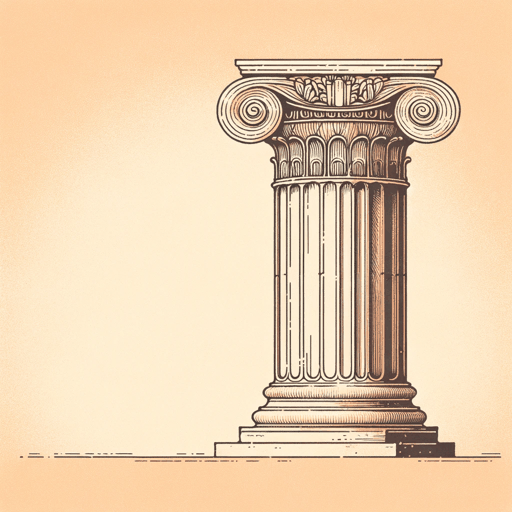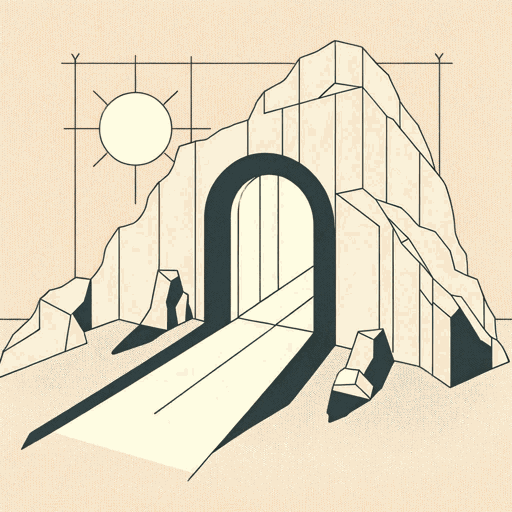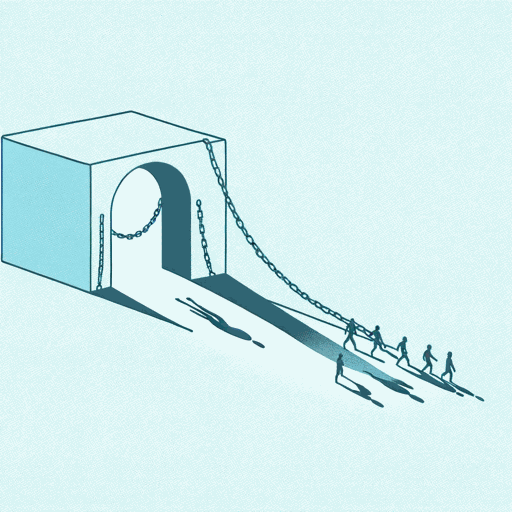34 pages • 1 hour read
PlatoAllegory Of The Cave
Nonfiction | Essay / Speech | Adult | BCEA modern alternative to SparkNotes and CliffsNotes, SuperSummary offers high-quality Study Guides with detailed chapter summaries and analysis of major themes, characters, and more. For select classroom titles, we also provide Teaching Guides with discussion and quiz questions to prompt student engagement.
Introduction
Teacher Introduction
Allegory of the Cave
- Genre: Philosophy; allegory
- Originally Published: Around 380 BC in The Republic
- Reading Level/Interest: College/Adult
- Structure/Length: Approximately 9 pages
- Central Concern: In “The Allegory of the Cave,” Plato presents a dialogue between his mentor, Socrates, and other participants, in which they discuss human perception and knowledge. The allegory depicts prisoners chained inside a cave, facing the wall, with a fire behind them. Their reality is limited to the shadows cast on the wall by objects behind them, leading to a skewed understanding of the world. When one prisoner is freed and encounters the world outside the cave, he realizes the limited nature of his previous understanding but faces challenges in convincing the others of the greater reality beyond the cave. The allegory explores themes of enlightenment, the nature of reality, and the challenges of philosophical understanding.
- Potential Sensitivity Issues: Abstract philosophical concepts; discussions about the nature of knowledge and reality
Plato, Author
- Bio: Born around 428/427 BC; died around 348/347 BC; ancient Greek philosopher; student of Socrates and teacher of Aristotle; founded the Academy in Athens, one of the earliest institutions of higher learning in the Western world; made significant contributions to various fields including philosophy, political theory, and mathematics
- Other Works: Phaedrus (c. 370 BC); The Symposium (c.
Related Titles
By Plato
Study Guide

Apology
Plato
Study Guide

Crito
Plato
Study Guide

Euthyphro
Plato
Study Guide

Gorgias
Plato
Study Guide

Ion
Plato
Study Guide

Meno
Plato
Study Guide

Phaedo
Plato
Study Guide

Phaedrus
Plato
Study Guide

Protagoras
Plato
Study Guide

Symposium
Plato
Study Guide

Theaetetus
Plato
Study Guide

The Last Days of Socrates
Plato
Study Guide

The Republic
Plato

